| Class: | angiosperms |
| Order: | Lamiales |
| Family: | Verbenaceae |
| Genus: | Caryopteris |
| Scientific name: | Caryopteris mongholica Bunge |
| Name acc. to: | Gubanov 1996 |
| Herbar: | list records   |
| Description: | Multi-stemmed semishrub, young shoots dark-red. Leaves opposite, linear-lanceolate, entire or with spaced teeth, densely pubescent, gray-green. Flowers bright blue in racemose inflorescences, stamens long exserting the tube. Fruit fragile, four banners and striped capsules dissected into four sections. |
| Confuse with: | Only on species of Verbenaceae in Mongolia. |
| Comments: | Medical and forage plant. Hybrids of the blue flowered shrub are often cultivated as an ornamental. Plants die back to the base in winter. |
| Link to Flora of China: | http://www.efloras.org/browse.aspx?flora_id=2&name_str=Caryopteris+mongholica |
| open map in a new window | 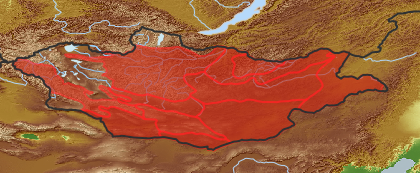 |
| Habitat: | Steppe and desert stony and debris slopes of hills and mountains, on rocks, slopes and sandy-pebble bottom of sayrs, river shoals, thin sands (Grubov 2001). |
| Habit (i)general appearance of a plant | |
| Growth form: (i)Herb, shrub, tree or climber. | shrub, subshrub or semishrub (i)Shrub, multi-stemmed, mostly (0.2) 0.5 - 5 m high, shoots woody up to the tip
example: Caragana leucophloea 
|
| Smell & Touch: (i)General appearance of the plant. | odor (i)Plant with an obvious scent
|
| Size of plant: (i)Attention: use flowering or fruiting specimens to assess plant height (many biennial plants possess only a basal rosette in the first year). | from 250 mm to 600 mm
from 600 mm to 1000 mm
from 1000 mm to 3000 mm
|
| Parasite status: (i)Is the plant a half- or full parasite? | no parasite/saprophyte (i)Plant fully autonomous, leaves with chlorophyll
example: Most plants, Ranunculus  inherited by family Verbenaceae: no parasite/saprophyte inherited by family Verbenaceae: no parasite/saprophyte
|
| Water or terrestrial plant: (i)Where do the plants grow? | terrestrial (i)Plant grows on dry land
example: Orostachys spinosa  inherited by family Verbenaceae: terrestrial inherited by family Verbenaceae: terrestrial
|
| Leaf (i)expanded, usually photosynthetic organ of a plant (including phylloclades) | |
| Leaf development: (i)Structure and development of leaves. | flattened blade (i)Cross-section of lamina flat, plain  inherited by family Verbenaceae: flattened blade inherited by family Verbenaceae: flattened blade
common leaf (i)Green, often divided in blade and petiole
example: Cotoneaster  inherited by family Verbenaceae: common leaf inherited by family Verbenaceae: common leaf
with green leaves (i)Plant with green leaves
|
| Leaf arrangement: (i)Arrangement of leaves at the stem. | opposite, opposite-decussate (i)Two leaves per node
example: Lamiaceae, e.g. Phlomis    inherited by family Verbenaceae: opposite, opposite-decussate inherited by family Verbenaceae: opposite, opposite-decussate  inherited by genus Caryopteris: opposite, opposite-decussate inherited by genus Caryopteris: opposite, opposite-decussate
|
| Simple or divided leaves: (i)Are the leaves simple or completely divided in several parts? Blade of the leaf entire or (more or less) deeply dissected. Attention: There are various appearances of the leaf margin (from entire to toothed and lobed). Here, we ignore this and ask only for dissections that separate the leaf for more than one third of its length or width, whatever is smaller. Sometimes, it is difficult to tell apart compound leaves from a shoot system with simple leaves: look for stipulae and/or axillary buds at the ground of the leaves: if only some possess these structures, the others are most likely leaflets of a compound leaf. | simple (i)Non-divided leaf, but margin may be incised nearly to the ground   inherited by family Verbenaceae: simple inherited by family Verbenaceae: simple
|
| Shape of blade: (i)Easy for simple leaves. In compound leaves use the general shape of leaflet. Always check the ground for largest leaves of a plant. To be worked out: how to handle pinnate leaves? | lanceolate (i)Lance-shaped; much longer than wide, with the widest point in the middle or below 
linear incl.grasslike or oblong (i)Leaves more than two times longer than broad with more or less parallel margins; see character: stipule for ligula
example: Dracocephalum ruyschiana, Poaceae, Scutellaria scordifolia, Pinus   inherited by genus Caryopteris: linear incl.grasslike or oblong inherited by genus Caryopteris: linear incl.grasslike or oblong
|
| Length of leaves: (i)How long is the leaf, be carefull in compound leaves, measure the complete leaf. | from 6 mm to 10 mm
from 11 mm to 20 mm
from 21 mm to 50 mm
|
| Width of leaves: (i)How broad is the leaf, be carefull in compound leaves, measure the complete leaf. | 2-3 mm
3-5 mm
5-10 mm
|
| Leaf apex: (i)Appearance of the tip of leaf resp. leaflets in compound leaves. | acuminate (i)Gradually tapering to a (sharp) point
example: Populus laurifolia? 
|
| Leaf margin: (i)Structure of leaf margin (or that of a leaflet in case of compound leaves). Attention: Here we ask for the leaf margin, defined as all those dissections that separate the leaf for less than one third of its length or width, whatever is smaller. To be worked out: how to handle margin of pinnate leaves? | entire (i)Plain margin, not toothed
example: Iris   inherited by family Verbenaceae: entire inherited by family Verbenaceae: entire
|
| Leaf base: (i)The angle the leaf blade forms with a real or imaginary (sessile leaves) petiole. Attention: Here, we consider only the base of leaves or leaflets (in case of compound leaves). | narrow (i)Angle < 30° 
|
| Petiole: (i)Leaf divided into stalk (petiole) and blade. | with (i)Leaves with petiole (stalk) 
shorter than blade (i)Petiol shorter than leaf blade
|
| Stipule: (i)Leaflets at the base of the petiole, these are smaller and of different shape. | none (i)Without stipules
example: Euphorbia, Ericaceae s.l.
|
| Leaf colour upper side: (i)Shades of green on the leaf, upper side. | green (i)Clear green
example: Tribulus terrestris
|
| Leaf colour lower side: (i)Shades of green on the leaf, lower side. | grayish (i)Grayish in colour due to hairs or a thick cuticula
example: Atriplex cana
|
| Leaf veination: (i)Arrangement of the main veins of a leaf. | pinnate (i)One main vein, several side veins, sometimes inconspicuous
example: Cicerbita     inherited by family Verbenaceae: pinnate inherited by family Verbenaceae: pinnate
|
| Flower (i)reproductive portion of the plant, consisting of sepals, petals, stamens, and pistils | |
| Flower appearance and pollination: (i)General appearance of the flower. | attractive, animal-pollinated (i)attractive and coloured flowers, mostly large, attracting surely animals
example: Trollius, Rosa, Chamaerhodos  inherited by family Verbenaceae: attractive, animal-pollinated inherited by family Verbenaceae: attractive, animal-pollinated
|
| Flower colour: (i)Attention: assess colour of the most colourful parts of the flower, but not of the stamens; be aware of single plants with a mutation (mostly white) on flower colour. | purple to violet (i)All colors between purple and violet, often changing with flower age
example: Pulmonaria  inherited by family Verbenaceae: purple to violet inherited by family Verbenaceae: purple to violet
blue (i)Bluish colours with mixture to red to deep blue
example: Myosotis, Dracocephalum  inherited by family Verbenaceae: blue inherited by family Verbenaceae: blue  inherited by genus Caryopteris: blue inherited by genus Caryopteris: blue
|
| Perianth arrangement: (i)Attention: in some plants, flowers may be dimorphic in different ways (dioecious or gynodioecious). If flowers vary, record the characters of the most showy flowers. | double, different (i)Two types of perianth leaves, differently coloured (sepals: outer periant leaves, usually greenish, and petals: inner perianth leaves, usually coloured)
example: Parnassia    inherited by family Verbenaceae: double, different inherited by family Verbenaceae: double, different
|
| Diameter of flower: (i)Diameter of flower or flower head. | from 5 mm to 10 mm (i)
example: Stellaria
from 10 mm to 20 mm (i)
example: Potentilla  inherited by family Verbenaceae: inherited by family Verbenaceae:
|
| Flower symmetry: (i)Symmetry of the perianth leaves. Attention: to assess this character, look on sepals, petals and stamens, but neglect carpels and ovary. | radiary, regular (actinomorphic) (i)More than two axis of symmetry
example: Saxifraga: 5; Iris: 3   inherited by family Verbenaceae: radiary, regular (actinomorphic) inherited by family Verbenaceae: radiary, regular (actinomorphic)
zygomorphic (i)One axis of symmetry, monosymmetrical flowers
example: Pedicularis, Nepeta, Viola     inherited by family Verbenaceae: zygomorphic inherited by family Verbenaceae: zygomorphic
|
| Flower form: (i)common forms of flowers ? Veronica | tubular to funnel-shaped (i)Petals form a tube, are often partially united to a cylindrical corolla, often surrounded by a calyx   inherited by family Verbenaceae: tubular to funnel-shaped inherited by family Verbenaceae: tubular to funnel-shaped
campanulate (i)Petals united to a bell-shaped corolla 
bilabiate (i)Petals froming two lips, flower usually zygomorphic
example: Lamiaceae, Scrophulariaceae p.p.   inherited by family Verbenaceae: bilabiate inherited by family Verbenaceae: bilabiate
|
| Sepal number: (i)Number of sepal leaves (outer perianth leaves, calyx leaves, mostly greenish). Attention, this character applies only for flowers separated in sepals and petals, thus excluding most monocots. Be aware of the bracts (involucral leaves) of Asteraceae flowerheads, do not qualify these as sepals! Be also aware in Rosaceae is often an epicalyx developed, in this case count all parts. | 5 (i)
example: Polemonium
|
| Petal / Tepal number: (i)Number of petal leaves (inner perianth leaves, usually coloured). | 5 (i)
example: Potentilla
|
| Petal / Tepal fusion: (i)To which degree are the petal leaves connected? Petals sympetalous. | fused (i)petal leaves united, only tips are free (gamopetalous, sympetalous)
example: Linnaea, Adenophora, Stellera
|
| Spur: (i)A hollow, slender, sac-like appendage of the perianth leaves, storing nectar. | no spur (i)Flower without appendage
example: Peganum  inherited by family Verbenaceae: no spur inherited by family Verbenaceae: no spur
|
| Stamen number: (i)Attention: We ask for the reproductive organs of the flower dispersing pollen. Count only fully fertile stamens, not staminodia (e.g. Parnassia). | 4 (i)Extremely rare, may be absent
example: Plantago  inherited by family Verbenaceae: 4 inherited by family Verbenaceae: 4
|
| Stamen fusion: (i)To which degree are the stamens fused? Attention: Whereas the pollen sacs itself are often free., their stalks (filaments) may be fused. Here, we count them as fused if they are together over at least one thirth of their length. | fused with a corolla (calyx in Thymelaeaceae) (i)Stamens with perianth leaves at least one third of the length of the filament
example: Orobanche, Salvia, Stellera  inherited by family Verbenaceae: fused with a corolla (calyx in Thymelaeaceae) inherited by family Verbenaceae: fused with a corolla (calyx in Thymelaeaceae)
|
| Pistil number: (i)Number of pistils (female floral organs: style, if developed; stigma and carpels/ovary together build the pistil). | 1 (i)One carpel, but clearly one stigma
example: Pyrola, Primula, Alyssum
|
| Carpel number: (i)Number of carpels (carpel: forming a simple pistil or part of a compound pistil, modified leaf). | 2
|
| Carpel fusion: (i)To which degree are the carpels (modified leaf forming simple pistil or part of a compound pistil) fused. | fused (i)Carpels united into an ovary, only styles are free
example: Malus, Berberis
|
| Style number: (i)Portion of the pistil connecting the stigma to the ovary. | 1
|
| Stigma number per style: (i)Number of stigmas per style. | 2 (i)Two stigmas, resulting from two fused carpels with or without developed style 
|
| Ovary position: (i)For entirely or partly fused carpels, describe their position in relation to the insertion point of perianth leaves (best done by doing a longitudinal section of a flower). | superior (hypogynous) (i)Base of carpels attached above insertion point of perianth leaves, carpels free or fused
example: Delphinium, Anemone    inherited by family Verbenaceae: superior (hypogynous) inherited by family Verbenaceae: superior (hypogynous)
|
| Sex: (i)Distribution of male and female organs among flowers, only most commonly cases. | bisexual, hermaphrodite (i)All or nearly all flowers of a plant with male and female parts
example: Haplophyllum, Chenopodium  inherited by family Verbenaceae: bisexual, hermaphrodite inherited by family Verbenaceae: bisexual, hermaphrodite
|
| Inflorescence (i)flowering part of a plant, describes the arrangement of the flowers on the flowering axis | |
| Inflorescence: (i)Structure of the inflorescence. | Flowers in inflorescence (i)No solitary flowers  inherited by family Verbenaceae: Flowers in inflorescence inherited by family Verbenaceae: Flowers in inflorescence  inherited by genus Caryopteris: Flowers in inflorescence inherited by genus Caryopteris: Flowers in inflorescence
Compound inflorescences (i)Flowers on shoots of higher orders (complex branched)
example: Solidago   inherited by genus Caryopteris: Compound inflorescences inherited by genus Caryopteris: Compound inflorescences
|
| Appearance: (i)Outer look of the inflorescence. | axillary (i)Usually several inflorescences in axillary shoots or single flowers in leaf axils, main shoot remains mostly leafy
example: Tragopogon, Aconogonon
|
| Inflorescence type: (i)Types of inflorescence. Attention: We here ask for the botanical nomenclature of inflorescences, which is sufficiently complicated. Tick only, if you are certain, or tick all inflorescence types that appear similar of these of the plant in question. | raceme (i)Stalked flowers arranged along a simple main axis, often one by one in the axils of leaves, maturing from bottom upwards
example: Aconitum barbatum   inherited by genus Caryopteris: raceme inherited by genus Caryopteris: raceme
cyme (i)A branched inflorescence, where the main shoot soon ends in a flower, being overtopped by one ore more shoots; attention: the flowers are often very crowded and the type difficult to identify (Lamiaceae)
example: Lamiaceae, Caryophyllaceae, Mollugo cerviana, Panzerina   inherited by family Verbenaceae: cyme inherited by family Verbenaceae: cyme
|
| Fruit (i)the seed bearing organ, with or without adnate parts; a ripened ovary and any other structures which are attached and ripen with it. Aggregate fruits are handled like simple fruits for determination. | |
| Consistency: (i)Fleshy fruits or dry fruits, see dispersal adaptations for further classification. | dry (i)With a dry outer shell, no fleshy parts, but seed (embryo) could be edible  inherited by family Verbenaceae: dry inherited by family Verbenaceae: dry
|
| Type of fruit: (i)Common fruit types (including pseudocarp). | Indehiscent fruits  inherited by family Verbenaceae: Indehiscent fruits inherited by family Verbenaceae: Indehiscent fruits
Solitary fruits (i)     inherited by family Verbenaceae: Solitary fruits inherited by family Verbenaceae: Solitary fruits
nut or nutlet (i)Dry fruit with a single, hard stone inside (and usually a large often edible embryo)   inherited by family Verbenaceae: nut or nutlet inherited by family Verbenaceae: nut or nutlet
|
| Opening of fruit: (i)Mode of dehiscence at maturity to release seeds. | not opening / indehiscent (i)Fruits remain closed at maturity and disperse with seeds inside
example: Corylus (nut), Vaccinium (berry)
|
| Splitting of fruit: (i)Is a solitary fruit splitting into fruitlets? The fruit splits into separate one-seeded segments at maturity (schizocarp). | splitting
in 4 parts (i)
example: Boraginaceae, Lamiaceae 
|
| Size of fruit: (i)Size of the fruit including appendage. | from 5 mm to 10 mm (i)
example: Silene: small capsule opening with teeth  inherited by family Verbenaceae: inherited by family Verbenaceae:
|
| Dispersal: (i)Appearance of fruit or seed (if single) and adaptations to dispersal. | Otherwise (i)All parts dry, no conspicuous adaptations  inherited by family Verbenaceae: Otherwise inherited by family Verbenaceae: Otherwise
|
| Seed number: (i)Estimate the number of seeds per fruit, if recognizable seeds are in the fruit (in rare cases a fruit may contain one seeded nuts: rose hip, carex). | 2-6 (i)2-6 single seeds, well recognizable
example: Crataegus: few-seeded berry  inherited by family Verbenaceae: 2-6 inherited by family Verbenaceae: 2-6
|
| Hairs | |
| Has hairs?: | has hairs  inherited by genus Caryopteris: has hairs inherited by genus Caryopteris: has hairs
|
| Hairs: (i)Appearance, structure, coverage of hairs on plant. | on leaf (i)Hairs on upper side, lower side or on margin of leaf  inherited by genus Caryopteris: on leaf inherited by genus Caryopteris: on leaf
coverage: scattered (i)Solitary hairs in large distances to each other
example: Dracocephalum origanoides  inherited by genus Caryopteris: coverage: scattered inherited by genus Caryopteris: coverage: scattered
leaf upper side (i)Has hairs on leaves upper side (blade)  inherited by genus Caryopteris: leaf upper side inherited by genus Caryopteris: leaf upper side
coverage: dense (i)Hairs reach each other if bent together
example: Papaver  inherited by genus Caryopteris: coverage: dense inherited by genus Caryopteris: coverage: dense
coverage: dense (i)Hairs reach each other if bent together
example: Stellaria dichotoma
leaf lower side  inherited by genus Caryopteris: leaf lower side inherited by genus Caryopteris: leaf lower side
appearance: soft (i)Hairs very flexible and soft, lay down at a touch
example: Saussurea
on stem/shoot (i)Has hairs on stem/shoot
|
| Root / shoot below ground (i)plant part below ground (in most cases), including below ground shoots, without leaves | |
| Root type: (i)Organisation of the roots. | allorhizous (i)Plant with a conspicuous tap root, one larger tap root with side roots
example: Dicotyledonae  inherited by order Lamiales: allorhizous inherited by order Lamiales: allorhizous
|
| Distribution (i)region where the plant is likely to be found | |
| Distribution (Veg. Zones): (i)acc. to Grubov 1952 | Khentei (i)In distribution data often named as '2' 
Khangai (i)In distribution data often named as '3' 
Mongol-Daurian (i)In distribution data often named as '4' 
Mongolian Altai (i)In distribution data often named as '7' 
Middle Khalkha (i)In distribution data often named as '8' 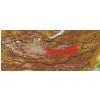
East Mongolia (i)In distribution data often named as '9' 
Valley of Lakes (i)In distribution data often named as '11' 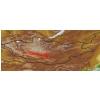
East Gobi (i)In distribution data often named as '12' 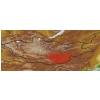
Gobi-Altai (i)In distribution data often named as '13' 
Transaltai Gobi (i)In distribution data often named as '15' 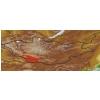
Alashan Gobi (i)In distribution data often named as '16' 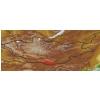
|
| Distribution Khangay: (i)acc. Flora Khangaya 1989 | V
VI
|
| Plant Status | |
| Endemism: | subendemit: East Mongolia
|
| Red list status: (i)Rare Mongolian plants | rare (Shiirevdamba 2007) (i)Rare plant
|